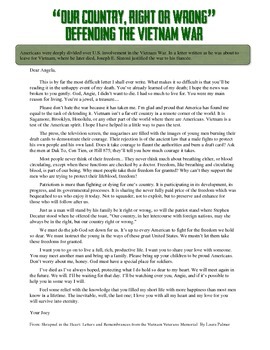Vietnam War Soldier's Letter Primary Source Reading
- PDF
- Google Apps™

What educators are saying
Description
This amazing Vietnam War primary source activity features a poetic letter from an American soldier who died in the conflict. It provides a moving interpretation of what it means to be a patriotic American.
The letter is beautifully written and will surely have a powerful effect on your students. It is also a great way to integrate reading analysis strategies into a lesson on the Vietnam War.
After reading the 1-page letter, students answer a set of open-ended comprehension and opinion questions to reflect on what they read. These are great critical thinking questions that can generate fantastic class discussion!
Both an editable Google Doc version and answer key are included for your convenience!
Thanks for looking!
Please take a moment to "Like" my page on Facebook for updates, giveaways, links and more! Thanks!





